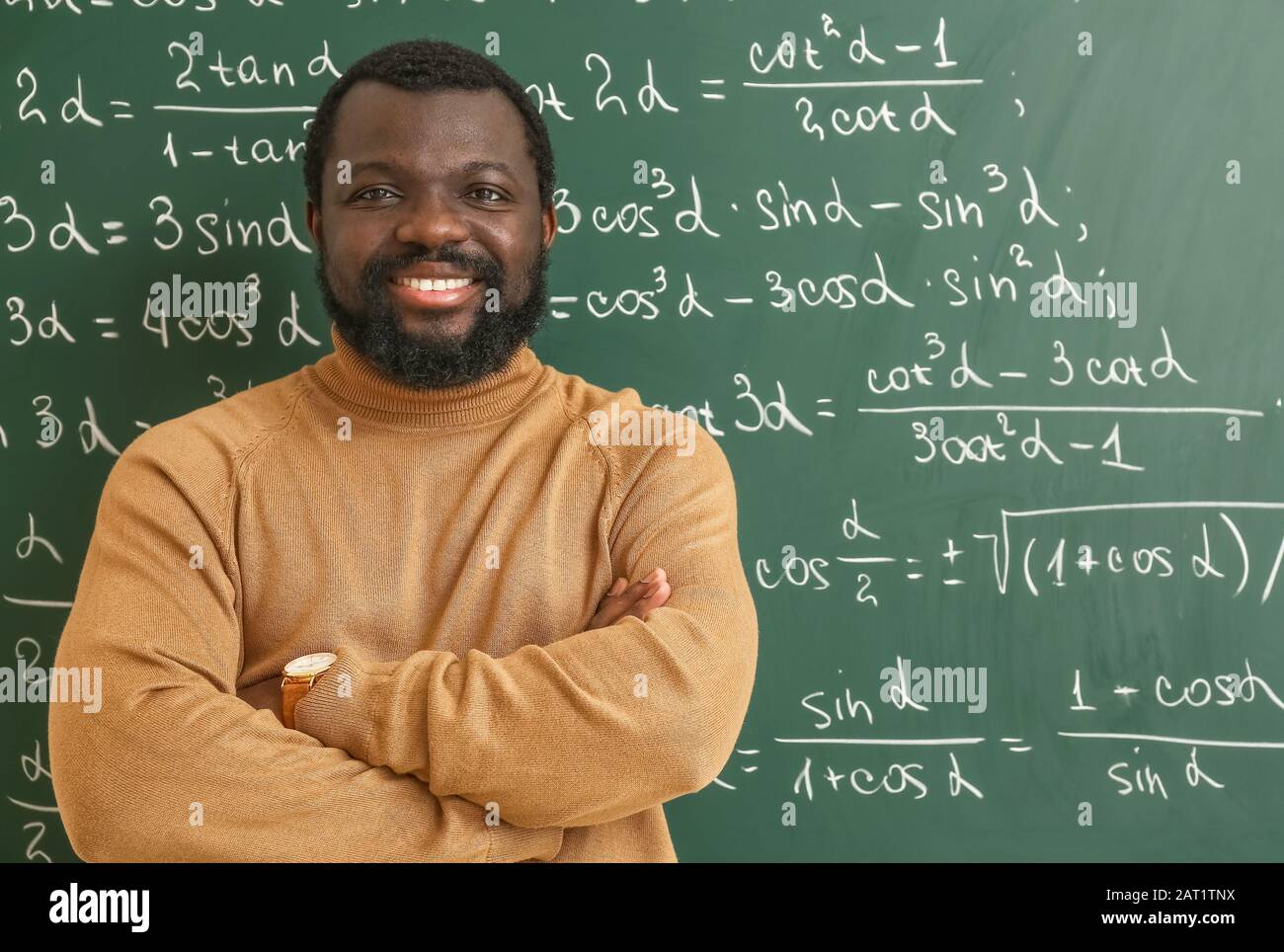Common challenges experienced math teachers face—and how they manage them
Wiki Article
Achieving Venture Excellence: Recognizing Industry Standards and Strategic Leadership for Mathematics Professors
Attaining enterprise quality in mathematics education requires a mindful examination of industry standards and the function of calculated management. Mathematics professors need to understand exactly how these standards shape educational program and training methods. Additionally, effective leadership can drive cooperation and specialist advancement amongst educators. This complex approach questions concerning the sensible effects for trainees' profession readiness. What strategies can faculty adopt to bridge the void between education and learning and industry needs?The Relevance of Industry Standards in Mathematics Education
In the domain name of maths education, adhering to sector standards is important for guaranteeing that programs properly prepare trainees for real-world applications. Sector requirements provide a framework that lines up educational end results with the skills needed in different professions. By integrating these requirements, math programs can enhance their relevance and rigor, therefore improving pupil interaction and learning outcomes.
Strategic Leadership: Specifying Responsibilities and duties
Effective tactical management within mathematics faculty requires a clear meaning of duties and duties to assure excellent functioning and placement with institutional goals. Leadership structures should be developed to mark tasks amongst faculty participants, managers, and assistance personnel, making sure that each specific comprehends their contributions towards cumulative purposes. Faculty leaders need to cultivate an environment that promotes partnership and liability, allowing employee to involve properly in curriculum advancement and analysis procedures.Strategic leaders must focus on recurring professional development, making certain that faculty members are fully equipped to satisfy the advancing demands of maths education and learning. This entails not only lining up specific duties with institutional priorities however likewise cultivating a culture of constant renovation and development. By plainly defining roles, strategic management can improve communication, enhance decision-making processes, and ultimately add to a much more natural and reliable maths faculty, poised to satisfy the challenges of contemporary education.
Best Practices for Enhancing Teaching and Learning
In the pursuit of boosting mentor and learning, mathematics professors can benefit from innovative training methods that involve pupils efficiently. Carrying out collaborative learning environments promotes synergy and essential reasoning abilities among students. These ideal methods are necessary for producing a dynamic academic experience that promotes deeper understanding of mathematical concepts.Ingenious Training Strategies
While traditional techniques of teaching have their area, innovative teaching strategies are important for boosting involvement and understanding amongst mathematics professors and their trainees. Strategies such as turned class and problem-based knowing urge energetic engagement, permitting students to take possession of their understanding. Including technology, such as interactive simulations and on-line partnership tools, better sustains varied knowing styles and promotes crucial reasoning. Additionally, using real-world applications in lessons assists students attach mathematical concepts to day-to-day life, making the subject much more attractive and relevant. Professors participants that accept these techniques can develop a vibrant learning environment that not only enhances comprehension however also motivates a long-lasting interest for maths. Embracing ingenious approaches ultimately causes greater degrees of trainee achievement.
Collaborative Discovering Atmospheres
Building on the ingenious training approaches previously reviewed, joint knowing atmospheres play a pivotal duty in improving the educational experience for mathematics professors and their trainees. These atmospheres motivate active interaction and cultivate a sense of area, permitting pupils to pick up from each other and develop vital assuming abilities. Best techniques include structured group work, peer tutoring, and project-based discovering, which promote collaboration and shared responsibility for learning end results. Professors should promote discussions and supply advice find more information while enabling pupils to discover concepts jointly. useful site In addition, integrating technology can enhance partnership by giving platforms for communication and source sharing. Eventually, joint discovering atmospheres empower pupils to take possession of their education and learning and grow a deeper understanding of mathematical ideas through synergy and interaction.
Lining Up Faculty Goals With Institutional Purposes
Lining up professors goals with institutional objectives is important for fostering a natural educational environment that improves both training effectiveness and trainee success. When faculty members comprehend and embrace the wider mission of their establishment, their teaching approaches can be customized to sustain these objectives. This placement guarantees that faculty are not just satisfying department expectations yet likewise adding to the overarching objectives of the establishment, such as improving student engagement and academic performance.To achieve this placement, regular interaction in between faculty and management is crucial. Workshops and collective meetings can facilitate conversations on institutional top priorities and exactly how professors can integrate these right into their curricula. In addition, performance analyses can be developed to reflect these straightened goals, encouraging professors to introduce in their teaching methods. Eventually, when faculty goals reverberate with institutional purposes, they cultivate a much more unified approach to education and learning, profiting both trainees and educators alike.
Cultivating a Culture of Continual Improvement
Fostering a culture of continual improvement within mathematics professors is essential for improving both training high quality and trainee outcomes. This includes developing a setting where faculty participants are encouraged to regularly examine their training practices and look for comments. Expert advancement chances must be readily available, enabling educators to explore brand-new instructional techniques and incorporate evidence-based techniques into their curriculum.Moreover, partnership amongst professors is essential; sharing understandings and experiences can result in innovative solutions and improved training methodologies. Establishments must carry out systematic assessment processes, allowing faculty to review their efficiency and recognize locations for development.
Acknowledging and celebrating achievements, no issue how tiny, enhances the dedication to improvement. By installing constant renovation into the professors society, mathematics departments can improve their total effectiveness, eventually profiting both educators and trainees in the quest of scholastic quality.
Cutting-edge Methods to Mathematics Program Growth
Various cutting-edge approaches can change maths program growth, making it more receptive to the evolving instructional landscape. experienced math teachers. One efficient method involves incorporating innovation, such as on-line learning systems and interactive software, to boost trainee interaction and ease of access. This shift permits a combined discovering environment, satisfying varied discovering designsFurthermore, embracing a project-based learning structure encourages joint analytical and click for source real-world application of mathematical concepts. Professors can likewise highlight interdisciplinary links, illustrating exactly how maths converges with fields like engineering, scientific research, and art, promoting a much more alternative academic experience.
Routine feedback from pupils and sector stakeholders can guide curriculum changes, making certain relevance and roughness. In addition, offering expert advancement opportunities for professors can promote cutting-edge mentor techniques and maintain instructors educated of the current trends. With these methods, math programs can grow a vibrant knowing atmosphere that prepares students for future challenges and occupations.
Frequently Asked Inquiries
Just How Can Professors Gauge the Effect of Market Standards on Pupil Outcomes?
Professors can determine the impact of market criteria on student results by analyzing assessment outcomes, tracking employment prices, obtaining employer feedback, and conducting longitudinal researches to compare pupil performance prior to and after carrying out the requirements.What Resources Are Readily Available for Specialist Growth in Mathematics Education?
Various resources for professional development in mathematics education consist of online programs, workshops, webinars, specialist organizations, meetings, and peer collaboration opportunities. These systems assist in ability improvement, ingenious mentor methods, and reliable integration of innovation into mathematics guideline.Exactly How Do Sector Standards Vary Throughout Various Geographical Regions?
Industry requirements vary significantly throughout geographical areas as a result of variables like governmental guidelines, academic top priorities, and social impacts. These disparities can affect curriculum development, teaching approaches, and the implementation of evaluation methods in maths education.What Role Does Technology Play in Achieving Enterprise Quality in Mathematics?
Modern technology boosts venture quality in maths by enhancing processes, allowing data analysis, fostering cooperation, and giving accessibility to sources. It equips students and educators alike, advertising ingenious mentor methods and boosting total instructional results in the field.How Can Professors Successfully Work Together With Industry Allies?

In the pursuit of enhancing mentor and knowing, mathematics professors can benefit from ingenious teaching methods that engage trainees properly. While standard methods of mentor have their location, innovative teaching methods are necessary for enhancing interaction and understanding amongst maths professors and their pupils. Building on the innovative mentor methods previously gone over, collaborative knowing settings play a pivotal role in enhancing the educational experience for maths professors and their students. Straightening professors objectives with institutional objectives is vital for cultivating a natural instructional setting that boosts both training performance and student success. Fostering a society of continuous renovation within maths professors is essential for improving both instructional top quality and student outcomes.
Report this wiki page